Fosi Audio SK02

TLDR version on YouTube: TDLR - Fosi Audio SK02
The Fosi Audio SK02 is the latest device released by the brand and has been sent to me directly by Fosi Audio for me to try it out and to share my opinions in this review. Fosi have not made any requests except for asking if I could publish my review around the 26th of February, which is when the product will be officially released. It is currently available (at the time of putting this review together) on Kickstarter as a preorder (for around 65€).
Therefore, as always, I will do my best to be as unbiased as possible in my review.
The SK02 is available from various sources that I will leave links to on my blog.
As usual, links that I share are non-affiliate.
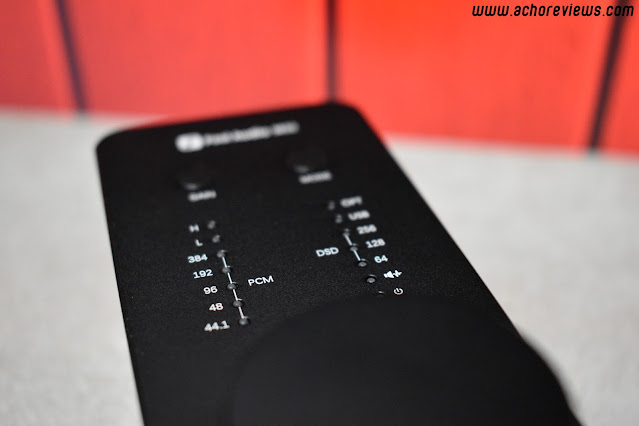
Intro…
Fosi Audio are not a new brand, they have been around for a while and produce audio amplifiers and related products at a fairly budget level. They are not the cheapest you can find on places like Amazon or Aliexpress but they are a brand that is serious about what they do and do it at a very reasonable price point.
I previously reviewed the K5 Pro here on the channel and today we have the SK02, which is another DAC/Amp combo but in a different form factor (and with different specs).
This small desktop all in one features and ES9038Q2M DAC chip (I am actually told it uses 2 of them), which has been used in quite a few devices before by many brands. In this case, Fosi have paired it with an SGM8262 OP Amp, which is also something we have seen before in other devices.
The specified power output (according to the Fosi Audio published spec) is 280mW @32Ohm (unbalanced) and 1100mW @32Ohm (balanced). These are quite powerful numbers and are almost double, in the case of the balanced output, to what I have seen specified from other models in the past using the same OP Amps.
But we will talk about power in just a moment, let’s first take a usual look at packaging and presentation.
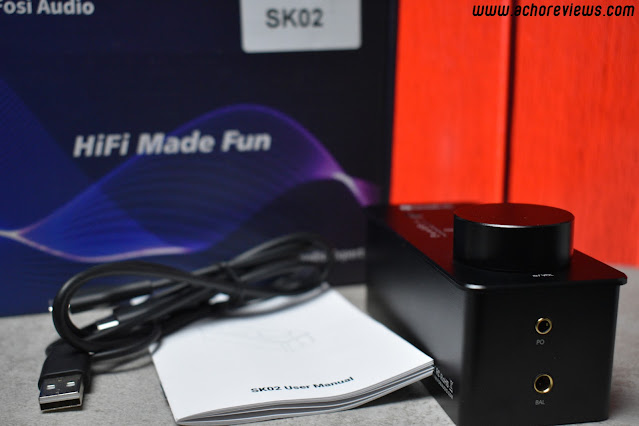
Presentation…
There is absolutely no doubt that Fosi Audio spend as little as possible on the packaging in order to keep the price down. Well, I guess they could go with just a generic brown box or even just a padded envelope (it wouldn’t be the first time I have received devices packed just in an envelope), so lets say that the go for the cheapest branded packaging they can.
The box is the same a the one used on other Fosi products and shows the Fosi Logo on the front with the model name added by means of a sticker in the top right corner. There are no specs about the product on the box (which is understandable as it is a generic box for multiple products) although it does mention that you have a 30 day return period, 18 month warranty and lifetime technical support. Of course, if you are buying from Amazon here in Europe (or any other European seller), the warranty will be the legal minimum of 2 years or longer, depending on which country you reside/buy it in (Spain is 3 years).
Opening the box reveals a simple foam cutout that contains the DAC/Amp, the user manual and a USB-C to USB-C cable with an attached USB-A adapter.
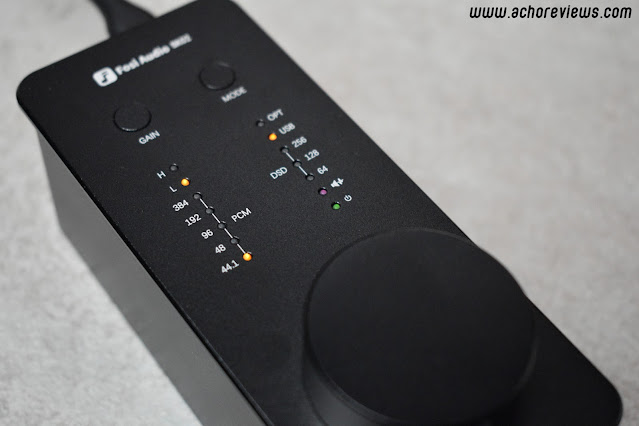
Build and aesthetics…
The form factor is different to the majority of small all in one DAC/Amp combos as it is focused around having the volume control and information leds on the top of the device. This is a layout that will work better or worse for you depending on how you intend to set up and place the device.
The shell of the device is aluminium in a black finish and while it is not extremely heavy, there is a bit of weight to it to stop it being easily dragged around the desk when in use.
I am a fan of this style of device for places like my work desk as it provides a small form factor that can sit at the side of my keyboard and USB microphone, with easy to access volume control and easy to read status LEDs.
The overall build quality is pretty good, with rubber strips on the bottom to also stop it from sliding easily. The volume knob does have a slight wiggle when rocked side to side but it is not bad and is not really noticeable when using the device, just when actually focusing on rocking the wheel.
The majority of the status LEDs are orange and are bright enough to see but not bright enough to be distracting, something that I am grateful for when having it within eyesight on my desk.
While I wouldn’t say that the SK02 stands out as an incredible build or has eye catchng looks, I do think that it is well built and really can’t fault it for the price range that it sits in.
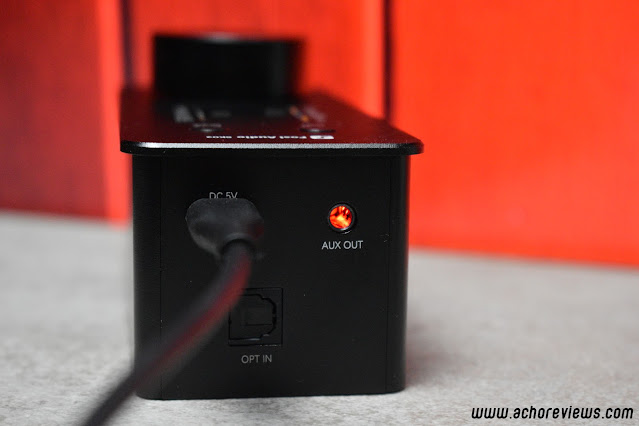
Functionality…
On the top of the device we have a large volume knob that also serves as a play/pause button and a power switch, at least on Windows 10. The knob is an infinite rotary style, so you can turn it endlessly and the only real feedback in regards to level is the amount of sound coming from your headphones (or speakers). Well, I guess that is not really true, as there is a volume level LED but that is a single LED that works sort of like a clip LED on a console or other device. By this I mean that the LED only really starts to flash as the volume level starts to increase, flashing brighter and longer as the volume increases. It is a nice touch and I appreciate it being included but it really isn’t something that will give you a real idea of the level.
The volume from the SK02 is independent to that of Windows. By this I mean that the setting of the SK02 in the Windows mixer does nothing. No matter the level set, it will allow the full range of the SK02 to be used and turning the volume knob does not adjust volume in the Windows mixer, it is separate amplification on the device itself. This is something very positive in my opinion as you can use exclusive modes in apps like Tidal or Foobar and not have to worry about it blasting sound through your headphones but it also means that you have to reduce volume with the knob and keyboard shortcuts will do nothing (including mute).
The rotary knob is also a push down switch which plays or pauses the music (or Youtube video etc.) when pressed once. A long press of the knob switches the SK02 off, which means you can disconnect the device without having to unplug it. A long press to switch it back on and the device reappears in Windows almost instantly.
Above the knob, the centre of the top panel features 14 mini LEDs. As I said a moment ago, the majority of these are orange, with only the volume status LED being a purple colour and the power LED being green. To be honest, I don’t really see the need for the power LED as there are always other LEDs active when the device is on anyway, but at least it makes the layout symmetrical.
The LEDs are in two columns of 7, with the left column showing (from top to bottom):
High Gain
Low Gain
384 PCM
192 PCM
96 PCM
48 PCM
44.1 PCM
The right hand column, again from top to bottom, shows:
Optical Input
USB Input
256 DSD
128 DSD
64 DSD
Volume level status
Power
These are all identified by small white text which is simple but easily read and nicely laid out.
Above the LEDs, at the top of the panel, there are two push buttons that sit flush with the device. The left button switches the Gain level, while the right button switches between the two input modes.
On the front of the SK02 we find the headphone connectors. These are a 3.5mm unbalanced connection, with a 4.4mm balanced connection below. The 3.5mm connector is slightly off center in comparison to the 4.4mm directly below, I am guessing due to internal space restrictions. This is only really a minor thing to point out and not a complaint as you only really notice it when looking straight at it.
The sides of the device are empty of connections and moving around to the back panel we find a USB-C input, an Optical input and a 3.5mm preamp output. The output is controlled by the volume knob (hence being a “preamp” output) and is muted by inserting headphones into the headphone output.
Something that I discovered while recording the Spanish video review is that the 3,5mm output is also an optical output, allowing the SK02 to feed other systems digitally. This is something that I always find handy and is nice to see on a budget device.
That is about it as far as functionality, plug in your cables, choose your mode and volume level and that’s it, away we go.
The only real comment I have here is that I think a microphone input would have been a good idea for this kind of device, similar to the one on the K5 Pro or maybe even just a TRRS for the 3.5mm to allow the multiconnector to be used. I am not talking about a high end microphone input, just something simple to allow gamers to use their headsets with this device, even if the mic volume would only be controlled in Windows. This is by no means a complaint, just a comment, exactly the same comment I have made with other similar devices in the past.
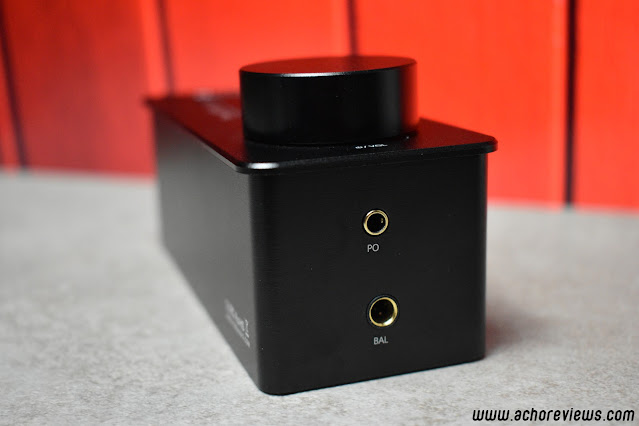
Sound…
I have not measured the output power of this device and I am still sceptical about the 1100mW claimed for the balanced output but I have to say that it is a very powerful little device. There is no exact volume meter for me to be able to tell you at what volume level I have been using this amplifier but I have certainly not been anywhere near max level with anything I have plugged into it. In fact, as a quick example, if I set the SK02 to full and then raise the volume in Foobar (as the Windows mixer does nothing), with the KPH40 on low gain, my usual listening levels are around -25dB and -15dB starts to be far too loud for me.
As far as sound, I will make my usual disclaimer that differences in sound between sources are usually very minimal, often exaggerated by reviewers to get our point across and most probably more based on our brain’s interpretation than actual differences in sound. Saying that, I find the SK02 to be neutral edging very slightly towards the warm side of neutral. Not warm as in iFi style but certainly not cold and clinical like a THX. I would say it is similar in this style to something like Earmen or maybe Aune, although not quite at that level.
There is no real sensation of it adding anything to the sound, I think it is more that details are ever so slightly rounded, giving it a bit more of a smoother response which means that it is not going to be quite as detailed as some of the other brands and models out there but it is far from being a bad music reproduction.
Testing it with sensitive IEMs I found that, especially as the volume level raises, there is a presence of some background noise. However, I found it difficult to judge if it was the actual noise floor of the amplifier itself or if it was just making the noise of the track more than I am used to. In order to test this further, I used a silent track (basically a recording of silence) and found that I could max the volume with the same IEMs without hearing any of the background hiss, so my conclusion is that, for some reason, it is making the background noise present in recordings a little more noticeable than I am used to.
NOTE: As a safety disclaimer, I strongly recommend that you do not do this test! I was using Foobar with the output via Wasapi to the SK02, which means that “in theory” no other sounds could access the device. However, if something had gone wrong and something that was not silence had managed to play (i.e: another track or a windows notification), then I would probably have damaged both the IEMs and my hearing. Again, please don’t try this at home!
Anyway, back to the sound. As I said, it is neutral edging towards warm and I found that it works pretty well with both IEMs and headphones that are easy to drive, having more power than I would ever need. However, with the KPH40 (60 Ohms & 101dB) and the HD6XX (300 Ohms and 103dB) that, when pushing the volume a little higher, things didn’t seem to be quite as clean, especially when the track had a decent amount of bass. It is not that it sounded terrible, just that they seemed to have a little bit of congestion going on in the upper mids and treble when there is a good amount of bass.
This is something that I did not notice with lower Ohm headphones, even those that have lower sensitivity, nor did I notice it with higher Ohm IEMs, so I am not sure what is going on there. I just get the feeling that things are not quite as clean as they could be in these cases.
I also put some planars to the test with the SK02 and while it did a decent enough job, I did find it struggled to keep up with fast moving bass content on some of them such as the Arya v2. With the Ananda and the Edition X it didn’t suffer as much but I would still say that it lacks enough current to be able to move planar headphones properly, at least those that I have. This is also understandable as it is powered by USB and is a fairly small device.
With IEMs and easier to drive headphones, I found performance to be more than adequate for the vast majority of people who would contemplate having this on their desk.
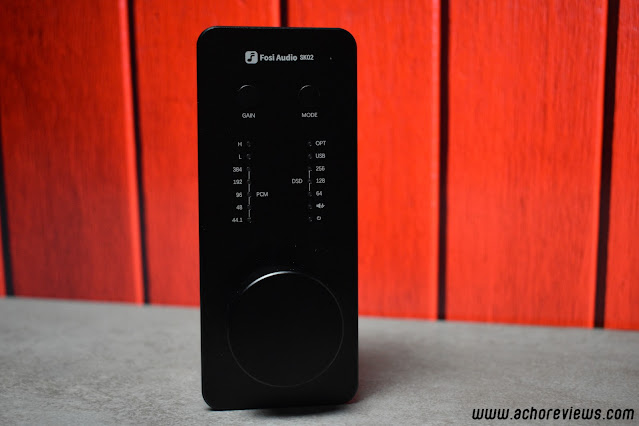
Conclusion…
Again I find that Fosi Audio offers a device that is going to appeal to a lot of people. I don’t think it is really aimed at the audiophile crowd but more at the general music listener/lover that wants something small and compact for their desktop.
I also think that it is a good option for the gamers out there who use independent headphones and a USB mic. It is plenty powerful and is very easy to adjust on the fly, while taking up about the same amount of real estate as a mouse.
It can also be hooked up to a secondary source via its Optical input, and serve as a preamp to speakers via the aux output, so again, it is something that could serve a lot of people at a very reasonable price.
As always, this review is also available in Spanish, both on my blog (www.achoreviews.com) and on YouTube (www.youtube.com/achoreviews)








